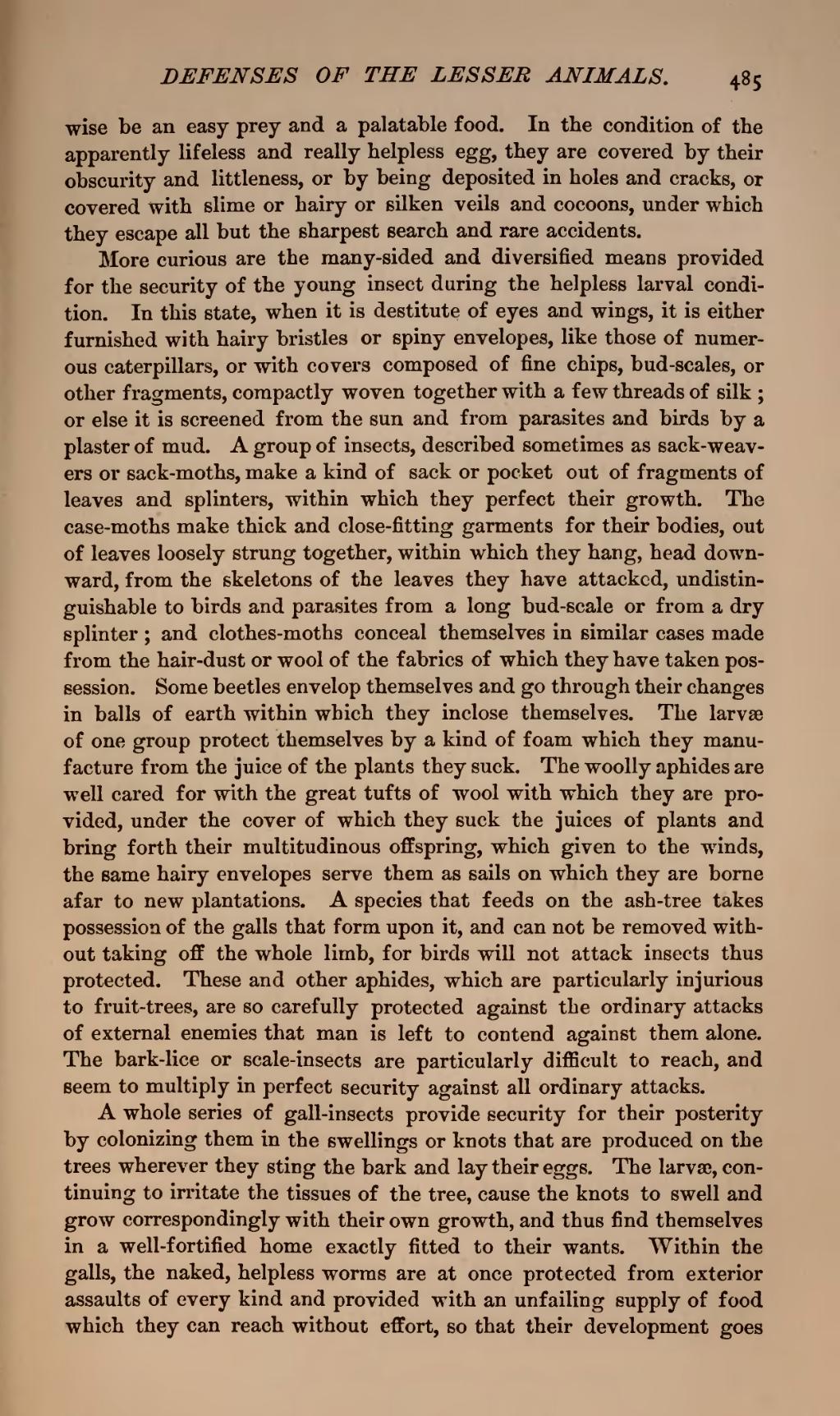wise be an easy prey and a palatable food. In the condition of the apparently lifeless and really helpless egg, they are covered by their obscurity and littleness, or by being deposited in holes and cracks, or covered with slime or hairy or silken veils and cocoons, under which they escape all but the sharpest search and rare accidents.
More curious are the many-sided and diversified means provided for the security of the young insect during the helpless larval condition. In this state, when it is destitute of eyes and wings, it is either furnished with hairy bristles or spiny envelopes, like those of numerous caterpillars, or with covers composed of fine chips, bud-scales, or other fragments, compactly woven together with a few threads of silk; or else it is screened from the sun and from parasites and birds by a plaster of mud. A group of insects, described sometimes as sack-weavers or sack-moths, make a kind of sack or pocket out of fragments of leaves and splinters, within which they perfect their growth. The case-moths make thick and close-fitting garments for their bodies, out of leaves loosely strung together, within which they hang, head downward, from the skeletons of the leaves they have attacked, undistinguishable to birds and parasites from a long bud-scale or from a dry splinter; and clothes-moths conceal themselves in similar cases made from the hair-dust or wool of the fabrics of which they have taken possession. Some beetles envelop themselves and go through their changes in balls of earth within which they inclose themselves. The larvae of one group protect themselves by a kind of foam which they manufacture from the juice of the plants they suck. The woolly aphides are well cared for with the great tufts of wool with which they are provided, under the cover of which they suck the juices of plants and bring forth their multitudinous offspring, which given to the winds, the same hairy envelopes serve them as sails on which they are borne afar to new plantations. A species that feeds on the ash-tree takes possession of the galls that form upon it, and can not be removed without taking off the whole limb, for birds will not attack insects thus protected. These and other aphides, which are particularly injurious to fruit-trees, are so carefully protected against the ordinary attacks of external enemies that man is left to contend against them alone. The bark-lice or scale-insects are particularly difficult to reach, and seem to multiply in perfect security against all ordinary attacks.
A whole series of gall-insects provide security for their posterity by colonizing them in the swellings or knots that are produced on the trees wherever they sting the bark and lay their eggs. The larvae, continuing to irritate the tissues of the tree, cause the knots to swell and grow correspondingly with their own growth, and thus find themselves in a well-fortified home exactly fitted to their wants. Within the galls, the naked, helpless worms are at once protected from exterior assaults of every kind and provided with an unfailing supply of food which they can reach without effort, so that their development goes
